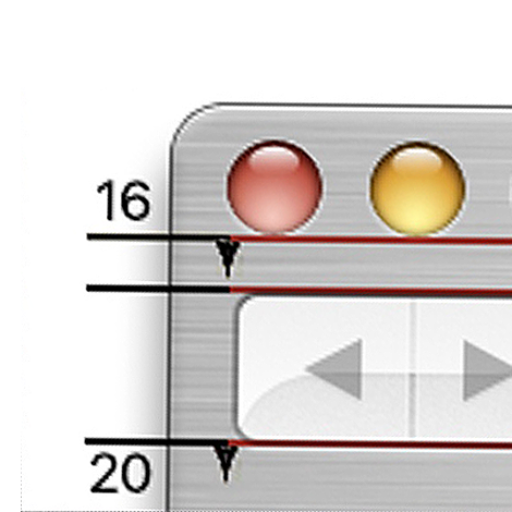Psychology Insight Analyzer-psychology data analysis tool
AI-powered insights for psychology research
RQ1) Are there significant correlations between intelligence and the acceptance of “active” or “passive” enhancement methods? (exploratory research question)
RQ2) Are there significant correlations between a persons’ self-estimated intelligence and acceptance of “active” or “passive” enhancement methods? (exploratory research question)
RQ3) Are there significant correlations between a persons’ implicit theory of intelligence and acceptance of “active” or “passive” enhancement methods? (exploratory research question)
RQ4) Are intelligence, self-estimated intelligence, and the implicit theory of intelligence able to predict statistically significant variance in the acceptance of “active” or “passive” enhancement methods in addition to personality traits (Big Five, Dark Triad, vulnerable narcissism)? (exploratory research question)
Related Tools
Load More
Cognitive Psychology Guide
Cognitive Psychology Expert, informative and approachable.
Jordan Peterson - Honest Psychologist
Engage in a stimulating, realistic conversation with Dr. Jordan Peterson.

The Mind Decoder (Psychology)
Ultimate Explainer for Psychological Manipulation Concepts and Tactics. Learn about your own Weaknesses and Biases and about how Others try to fool you, whether it's BigOil Propaganda, Russian Disinformation or Political Populism.

Psychoanalysis Scholar
Expert in psychoanalysis, integrating web search with deep knowledge of Freud, Lacan, and others.

Mr Psych
Expert in psychology, adept at explaining concepts to diverse age groups.

Psico-Espejo
Asistente virtual especializado en Psicología Clínica y Relacional.
20.0 / 5 (200 votes)
Introduction to Psychology Insight Analyzer
Psychology Insight Analyzer is a specialized tool designed to facilitate the structured exploration and analysis of psychological data, particularly for research projects. Its primary purpose is to assist users in conducting thorough data analyses, creating insightful visualizations, and interpreting results in a meaningful way. The Analyzer is equipped to handle complex datasets and research questions, guiding users through a step-by-step process that promotes a calm and reflective approach. For example, in a study investigating the relationship between intelligence and the acceptance of cognitive enhancement methods, the Analyzer helps researchers examine correlations, test hypotheses, and visualize data trends effectively.

Main Functions of Psychology Insight Analyzer
Data Visualization
Example
Creating scatter plots to explore the relationship between self-estimated intelligence and the acceptance of active enhancement methods.
Scenario
A researcher wants to understand if individuals with higher self-estimated intelligence are more likely to accept cognitive enhancement methods. The Analyzer can generate scatter plots, box plots, and histograms to visualize these relationships, helping the researcher identify patterns and trends.
Statistical Analysis
Example
Performing correlation and regression analyses to examine associations between variables.
Scenario
To test the hypothesis that there are significant negative correlations between the acceptance of enhancement methods and the Big Five personality traits, the Analyzer can conduct Pearson correlation and linear regression analyses. This allows the researcher to quantify the strength and direction of these associations.
Hypothesis Testing
Example
Conducting t-tests and ANOVAs to compare group differences.
Scenario
In a study comparing the acceptance of enhancement methods between different demographic groups (e.g., age or education levels), the Analyzer can perform t-tests or ANOVAs to determine if there are statistically significant differences between these groups. This helps in validating or refuting the research hypotheses.
Ideal Users of Psychology Insight Analyzer
Psychological Researchers
Researchers conducting studies in psychology who need robust tools for data analysis and visualization. They benefit from the Analyzer's ability to handle complex datasets, perform advanced statistical analyses, and create insightful visualizations, facilitating a deeper understanding of their research findings.
Graduate Students
Graduate students in psychology or related fields who are working on theses or dissertations. The Analyzer supports their learning and research by providing step-by-step guidance in data analysis, helping them to develop their analytical skills and produce high-quality research outputs.

How to Use Psychology Insight Analyzer
1
Visit aichatonline.org for a free trial without login, also no need for ChatGPT Plus.
2
Upload your data set, codebook, or research questions. Ensure your files are in a compatible format, such as CSV or Excel.
3
Define your research question(s) or hypothesis. Psychology Insight Analyzer works best when you provide clear and structured queries.
4
Use the analyzer to explore your data step-by-step. Visualizations, statistical analyses, and explanations will be provided based on your inputs.
5
Refine your analysis iteratively. Adjust your queries or hypotheses as needed, and the tool will adapt its responses and outputs.
Try other advanced and practical GPTs
Calidad en Educación Superior
AI-powered quality assurance for universities.

恋爱军师
AI-powered love advice for all.

Your Fashion Styles
AI-powered fashion inspiration at your fingertips.
FREE SEO Blog Content Outline Creator & Generator
AI-powered tool for optimized blog content

Budget Buddy
AI-powered personal finance assistant

Website Design Guru
AI-powered website design enhancement.

Anna: La LOMLOE a Catalunya
AI-powered support for LOMLOE education.

X Thread Generator
AI-driven Twitter thread generation made easy

Freelance Writing Mentor
AI-powered tips for sustainable freelance success

SREPro
Enhance SRE with AI insights

Palette Creator
AI-powered color palette customization

Stories from the Apple Design Team
AI-powered design insights from Apple.

- Data Analysis
- Hypothesis Testing
- Visualizations
- Exploratory Research
- Correlation Analysis
Common Q&A about Psychology Insight Analyzer
What types of data can I analyze with Psychology Insight Analyzer?
Psychology Insight Analyzer supports various data formats, including CSV and Excel. It is tailored for analyzing psychological data, particularly in the context of research questions related to cognitive abilities, intelligence, and related constructs.
How does the tool assist in data visualization?
The tool automatically generates insightful visualizations based on your data and research questions. It can create scatter plots, histograms, and regression charts, among others, to help you understand relationships and patterns within your data.
Can Psychology Insight Analyzer help with hypothesis testing?
Yes, it can. The tool is designed to test hypotheses by performing statistical analyses, such as correlation and regression, and then providing you with the results and interpretations in a clear and understandable format.
Is the tool suitable for exploratory research?
Absolutely. Psychology Insight Analyzer excels in exploratory research by allowing users to investigate potential correlations and patterns within their data without requiring a predefined hypothesis.
What is the best way to define research questions for the tool?
The best approach is to be as specific and clear as possible. For example, instead of asking broad questions, narrow down your focus to specific variables or relationships you want to explore. This will allow the tool to generate more accurate and relevant analyses.